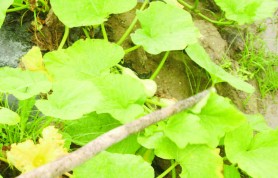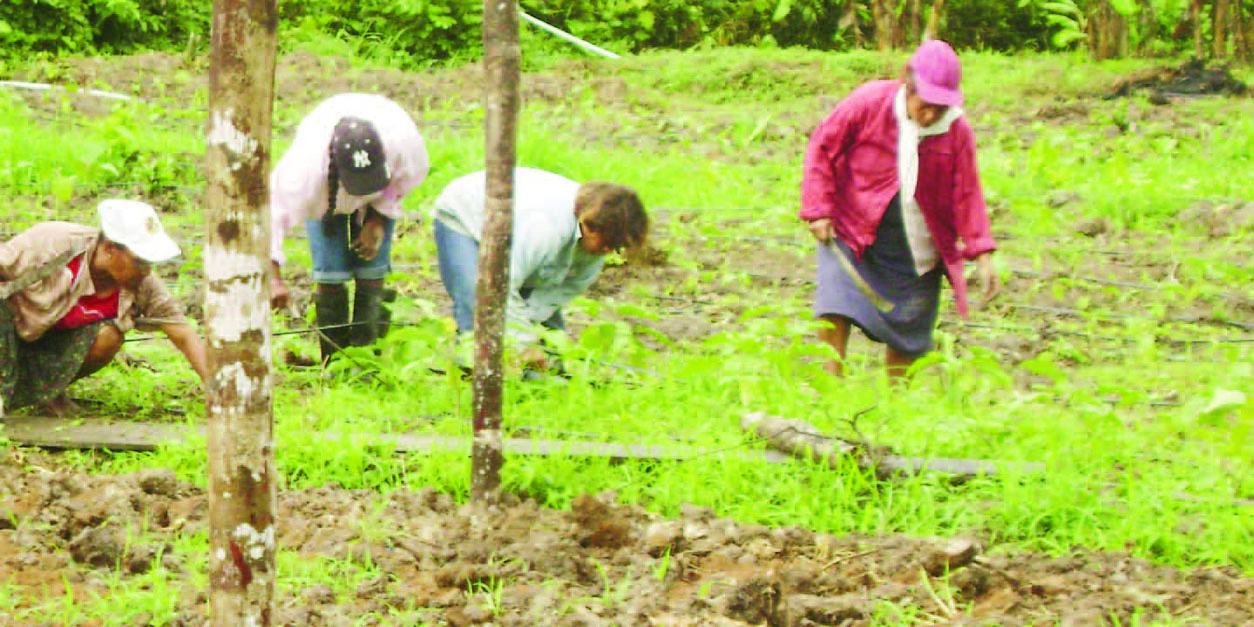(Reprinted from the April 21 edition of SN)
Using advanced agricultural technologies to cultivate non-traditional crops, Greenfield Farms is at the forefront of revolutionizing local farming practices to boost overseas exports.
A zucchini plant stands on a plant bed which is covered with plastic mulch to prevent the growth of weeds.

The state-of-the-art-facility, located at Timehri, East Bank Demerara, is a project facilitated by the United States Agency for International Development/Guyana Trade and Investment Support (USAID/GTIS) project. It was conceived by four New York based-Guyanese who decided to establish a state-of-the art agricultural farm after attending an investment seminar. The National Agricultural Research Institute (NARI) has been taking advantage of the technologies offered by the farm in the form of research and tours so that the benefits of modern technology in agriculture can be utilized.
Stabroek News visited the farm on Wednesday and had a first-hand look at the facility. Several plots (plant beds) on the farm are equipped with greenhouses and shade houses while a few plots are opened to the elements.
According to the farm manager Walter Rampersaud the design is intended to give local farmers a visual understanding of the advantages of using agricultural technology. He said most of the plants cultivated at the farm are not commonly harvested in Guyana. Some of them are broccoli, butternut squash, purple cabbage, Dalia melon (a variety of watermelon), plum/cherry tomato (varieties of tomato), cauliflower and zucchini.

Rampersaud said some of the plants are undergoing a trial run and if the crop is successful, the farm will continue to cultivate such crops. He said produce from the farm has been entering the local market recently while management continues to focus on the farm’s output so that its ultimate aim, which is to fulfil demands on overseas markets, are realized.
Cauliflower on a plant bed which is covered with plastic mulch to prevent the growth of weeds.
The farm is also equipped with a nursery, which houses several seedlings. He added that there are currently a few plants in the nursery that will be transplanted into the earth within two weeks. Crops such as purple cabbage and cauliflower are currently in the nursery.
Greenfield Farms at Timehri.
Rampersaud explained that the farm’s irrigation system utilizes water from the Demerara River. Water is pumped from the river into a reservoir which is located at the rear of the farm. A high-powered pump, which is connected to a configuration of pipes, pumps water from the reservoir into the pipes. Before the water enters the pipes it passes through a filter, which limits the presence of particles in the water. The pipes are connected to several drip lines which run parallel to each plant bed (plot).The drip lines are several hose-like lines which are made with small holes. Valves which are connected to the pipes are then turned on so that the plants can be watered. Fertilizer is also fed to each plant using this system. However, there is an injector pump which is also connected to the system within which chemicals and fertilizers are injected.
A few plant beds at Greenfield are equipped with plastic mulches. The farm manager said the reason for using plastic mulch is to prevent the growth of weeds, but he said there are also several beds without plastic mulch at the farm.
The plant beds at the farm are of varying lengths. They range from 150ft to 260ft in length and they are as wide as 20ft. The greenhouses and shade house are of similar length. Rampersaud also explained that the UV (ultraviolet) plastic which covers some of the shade houses has the ability to decrease the effects of sunlight which enters that facility. He said plants such as the cherry tomato are planted at this facility.
The farm is approximately 25 acres in size. Less than half of it is currently being cultivated while several shade houses are under construction as part of the expansion process. Some shade houses are made of dressed lumber while a few are made of round wood. Rampersaud noted that this is an economical strategy utilized by the farm since the use of dressed lumber is more costly when compared to the use of round wood, which is obtained from the forest located behind the facility.
There are approximately 10 persons working on the farm and most of them are women. Rampersaud said that this is because of the “nature of the job”, since the technology used on the farm keeps the utilization of manual labour to a minimum.

